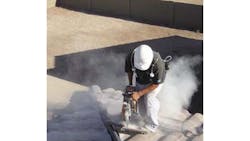‘Drastic Reduction’ in PEL Not Necessary to Protect Workers from Silica Hazards
In the coming months, OSHA will hold public hearings on one of its most far-reaching new regulations in recent years. OSHA’s proposed silica rule would affect more than 2 million workers in construction, oil and gas exploration, manufacturing and any work that involves silica-containing materials such as soil, dirt, sand, rock, brick, pavement or concrete.
Because silica is so ubiquitous and the impact of any rule so widespread, some in Congress and in industry have expressed concern over any unnecessary impact on jobs and the economy.
Much of OSHA’s proposed rule is modeled on the successful voluntary occupational health program established over 30 years ago by the country’s leading sand-producing companies through the National Industrial Sand Association. Those companies have virtually eliminated silicosis from their workplaces.
The proposed OSHA regulations would mandate for the first time many new and long-overdue worker-protection provisions, including silica dust controls, dust monitoring and medical surveillance of employees, similar to those developed voluntarily by the sand companies. However, OSHA also is calling for cutting the current permissible exposure limit for silica in half, which is not necessary. Sand industry experience shows that with proper dust controls and dust monitoring, workers have been and can continue to be protected at the current limit.
The inhalation of tiny crystalline silica particles, which come from silica-containing materials, can cause silicosis, a potentially disabling and sometimes-fatal lung disease. Silicosis is completely preventable, and government and employers must do everything necessary to protect workers.
NISA’s member companies mine and process the sand used in glass, oil and gas well stimulation, foundries, paint, water filtration and even the sand on your local golf course. These companies produce essentially 100 percent crystalline silica, so they are well-aware of the potential health effects for workers overexposed to respirable crystalline silica.
The sand industry’s commitment to stopping silicosis led to the establishment of NISA’s voluntary silicosis prevention program in the 1970s. With the assistance of occupational health experts, the companies develop and maintain state-of-the-art dust-control and dust-monitoring protocols in their workplaces and medical surveillance of their employees.
The sand companies’ over 30 years of experience shows that companies can successfully protect workers at the current permissible exposure limit of 100 micrograms per cubic meter of air. In other words, reducing the exposure limit from 100 to 50 micrograms is not the key to eliminating silicosis in American workplaces. Rather, the key is a government and industry commitment to adhere to the strict dust controls, dust monitoring and medical surveillance that OSHA now has included in its proposed rule, and strict compliance with the current permissible exposure limit.
Unfortunately, and tragically, much of industry is not now complying with the current rule. Even after years of focused enforcement efforts, OSHA records show that about 30 percent of the samples it takes exceed the current permissible exposure limit.
Under the current OSHA silica rule, employers are not even required to test the dust-exposure levels in their workplaces. The major strength of the new OSHA proposed rule is that, for the first time, employers will be required to regularly test and control the air their workers breathe, provide medical surveillance for employees, and keep detailed records of their work environments. These “ancillary” provisions will ensure that employers stay below the 100-microgram limit and thus protect workers and eliminate the scourge of silicosis.
OSHA is relying on theoretical studies and models to support its position that the permissible exposure limit must be cut in half to provide a safe work environment. The sand companies are relying on more than 30 years of actual workplace experience in successfully protecting workers to support their position that the current permissible exposure limit can be protective as long as employers are required to implement the reasonable controls, dust monitoring and medical surveillance necessary to ensure they stay in compliance.
Members of Congress are right to worry that unnecessarily restrictive government regulation can be harmful and sometimes undermine the wrong that government is trying to right.
The sand companies have a pragmatic, effective and long-tested model for protecting American workers. Members of Congress should encourage OSHA to adopt its proposed worker-protection provisions, but leave the exposure limit at 100 micrograms. A drastic reduction is not necessary to protect workers and it will unnecessarily cost jobs and hurt the national economy.
Mark Ellis is president of the National Industrial Sand Association.
This article originally appeared in Roll Call newspaper and has been republished with permission. Copyright © 2014 CQ-RollCall Inc. All rights reserved.
